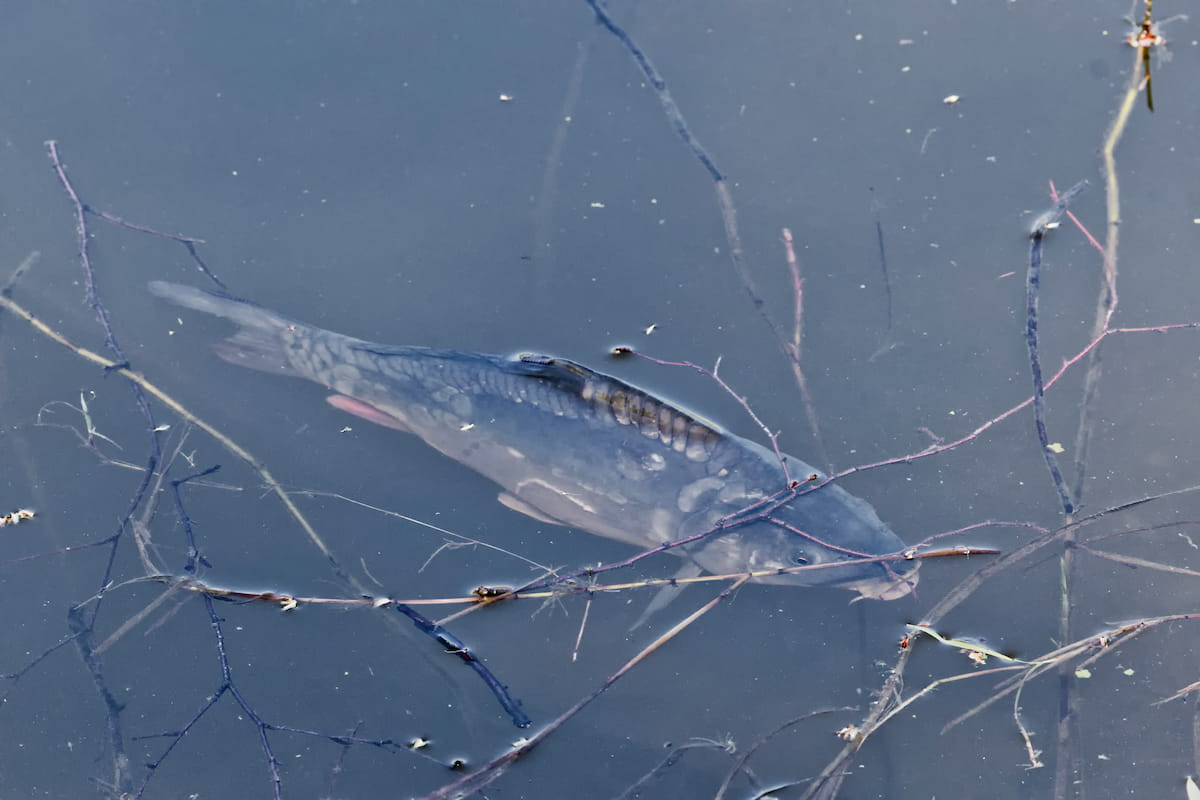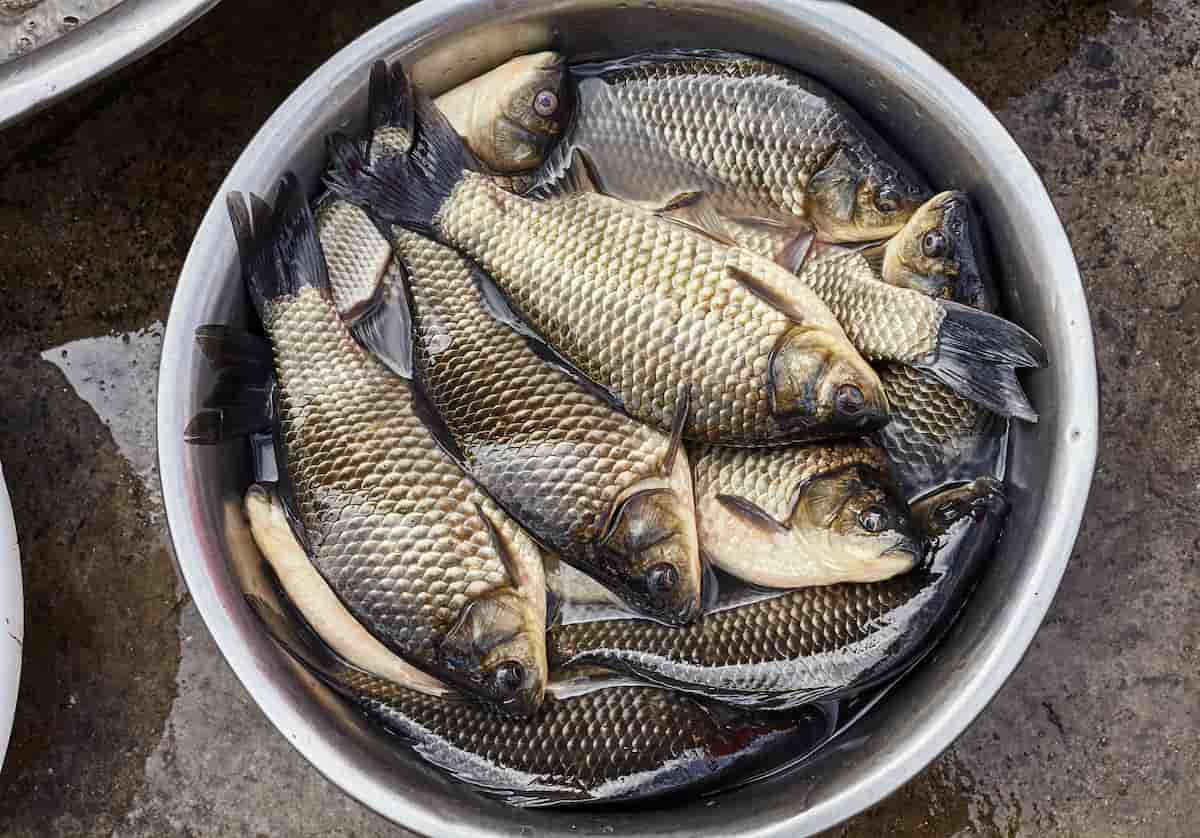Carp Erythrodermatitis (CE) is a bacterial disease caused by the Aeromonas salmonicida group of bacteria, which is also responsible for furunculosis in salmonids. This disease results in ulcerative lesions on the skin and fins of carp, but mortality rates are not typically significant. Effective management of CE involves preventative measures such as maintaining good water quality, practicing good farm management techniques, and implementing biosecurity measures.

Early detection is important to limit the spread of the disease, and treatment options include sulphonamide drugs like sulfamorazine, sulfaguandine, sulfadiazine, sulfamethazine, and sulfisoxazole, which can be administered through the feed. The use of antibiotics in aquaculture should be done under the guidance of a qualified professional to prevent the development of antibiotic resistance. While vaccines for CE are not yet available, proper management practices can help prevent the spread of the disease and minimize economic losses.
Carp Erythrodermatitis Disease Management
Causative Agents of Carp Erythrodermatitis Disease
- Carp Erythrodermatitis Disease is a skin condition characterized by ulcers, and it is caused by a group of bacteria known as Aeromonas salmonicida.
- This bacteria is also responsible for furunculosis in salmonids. The causal agent of the disease is the Aeromonas salmonicida complex.
Species of Fishes Affected by Carp Erythrodermatitis Disease
Carp Erythrodermatitis Disease is known to affect a variety of fish species, including common carp (Cyprinus carpio), koi carp (Cyprinus rubrofuscus), silver carp (Hypophthalmichthys molitrix), bighead carp (Hypophthalmichthys nobilis), grass carp (Ctenopharyngodon idella), and black carp (Mylopharyngodon piceus). The disease has been reported in various countries, and it can cause significant economic losses in the aquaculture industry due to its impact on fish health and production.
Spread and Transmission of Carp Erythrodermatitis Disease
Carp Erythrodermatitis is a contagious disease that can spread rapidly through fish populations. Here are some key points on the spread and transmission of the disease:
- The disease primarily spreads through direct contact with infected fish or contaminated water.
- Fish that are stressed or have weakened immune systems are more susceptible to the disease.
- The bacteria that cause the disease can survive in water for several weeks, allowing it to infect new fish that enter the contaminated environment.
- The disease can also be spread through contaminated equipment, such as nets or tanks, used with infected fish.
- Birds and other aquatic animals can also carry the bacteria and spread it to new environments.
- The disease is most common in warmer water temperatures, and outbreaks often occur in summer.
- The disease can cause significant economic losses in the aquaculture industry, as infected fish may have reduced growth rates or even die.
In case you missed it: Columnaris Management in Carp Fish: Disease Symptoms, Management, Prevention, Causes, Control, and Treatment

Symptoms and Signs of Carp Erythrodermatitis Disease
- Hemorrhagic ulcerative lesions are a common symptom of the disease, which can occur on the skin and fins of affected fish.
- Skin inflammation is another common sign, followed by swelling and redness.
- Exophthalmia, or bulging eyes, may occur in some cases.
- Edema, or swelling, of the internal organs, can also occur as the disease progresses.
- Anaemia, or a low red blood cell count, may occur in severe disease cases.
- Mortality is not always significant, but the disease can cause reduced growth rates and economic losses in the aquaculture industry.
Diagnosis of Carp Erythrodermatitis Disease
- The clinical examination may involve observing affected fish for signs of hemorrhagic ulcerative lesions, skin inflammation, and other symptoms.
- Laboratory testing may involve bacterial culture and microscopic examination of tissue samples, which can help to confirm the presence of Aeromonas salmonicida bacteria.
- PCR (polymerase chain reaction) testing may also be used to detect the presence of bacteria in samples.
- Observing fish behavior can also help diagnose the disease, as infected fish may show signs of lethargy, reduced appetite, and other behavioral changes.
Treatment of Carp Erythrodermatitis Disease
- The treatment of Carp Erythrodermatitis Disease typically involves using chemotherapeutic agents to control the spread of the disease.
- Chemotherapeutic agents may be applied through various methods, including bath treatments, intraperitoneal injections, or incorporation into fish feed.
- Terramycin is the most important and can be supplied at 5-7g/100kg fish daily for 7-10 days or injected intraperitoneal injection at 25mg/kg body wt.
- Oxytetracycline is one commonly used chemotherapeutic agent for the treatment of the disease. It is typically administered at a rate of 7.0-8.0 grams per 100 kilograms of fish per day for 8-10 days.
- Other effective chemotherapeutic agents include chloramphenicol and furazolidone, which can be administered in bath treatments at a rate of 80-200 grams per cubic meter.
- Intraperitoneal injections of oxytetracycline or chloramphenicol may also be used at a rate of 10-30 milligrams per kilogram of fish.
- Supportive care, such as improving water quality and reducing stress in affected fish, can also be helpful in the treatment and management of the disease.
In case you missed it: Spring Viremia Management in Carp Fish: Disease Symptoms, Management, Prevention, Causes, Control, and Treatment

Prevention & Control Measures of Carp Erythrodermatitis Disease
- Maintain good water quality by regularly testing and monitoring temperature, pH, and dissolved oxygen levels.
- Minimize stress in fish populations through appropriate management practices such as feeding schedules and stocking densities.
- Quarantine new fish arrivals and treat them prophylactically with antibiotics before introducing them to existing populations.
- Practice good biosecurity measures such as disinfecting equipment and tanks between uses.
- Implement a disease surveillance program to monitor fish populations for signs of disease.
- Treat infected fish with appropriate chemotherapeutic agents such as oxytetracycline or chloramphenicol to control the spread of the disease.
- Dispose of infected fish properly to minimize the risk of disease transmission to other fish populations.
- Educate fish farmers and workers on the signs and symptoms of the disease and appropriate prevention and control measures.
Conclusion
Carp Erythrodermatitis Disease (CE) is an ulcerative skin disease caused by the bacteria Aeromonas salmonicida. It causes hemorrhagic ulcerative lesions on the epidermis and fins of various freshwater fish species. Maintaining good water quality, minimizing stress in fish populations, practicing good biosecurity measures, and having a disease surveillance program are all important components of effective CE management and prevention. Chemotherapeutics such as oxytetracycline, chloramphenicol, and furazolidone are used to treat CE. Early detection and management can help reduce the effect of CE on fish populations.
- Beneficial Insects in Pest Management
- Natural Solutions for Pest Control in Flower Gardens
- Types of Fungicides Used in Agriculture
- Common Issues in the Fruit Development Stage of Pomegranate Farming
- Fruit Development Issues in Papaya: Easy Solutions and Treatment
- Soil-Borne Diseases and How to Protect Your Plants
- Practices to Prevent Disease Spread in the Garden
- From Wilted to Thriving: How to Treat Root Rot Naturally in Houseplants
- Natural Remedies to Cure Brown Spots on Fig Tree Leaves